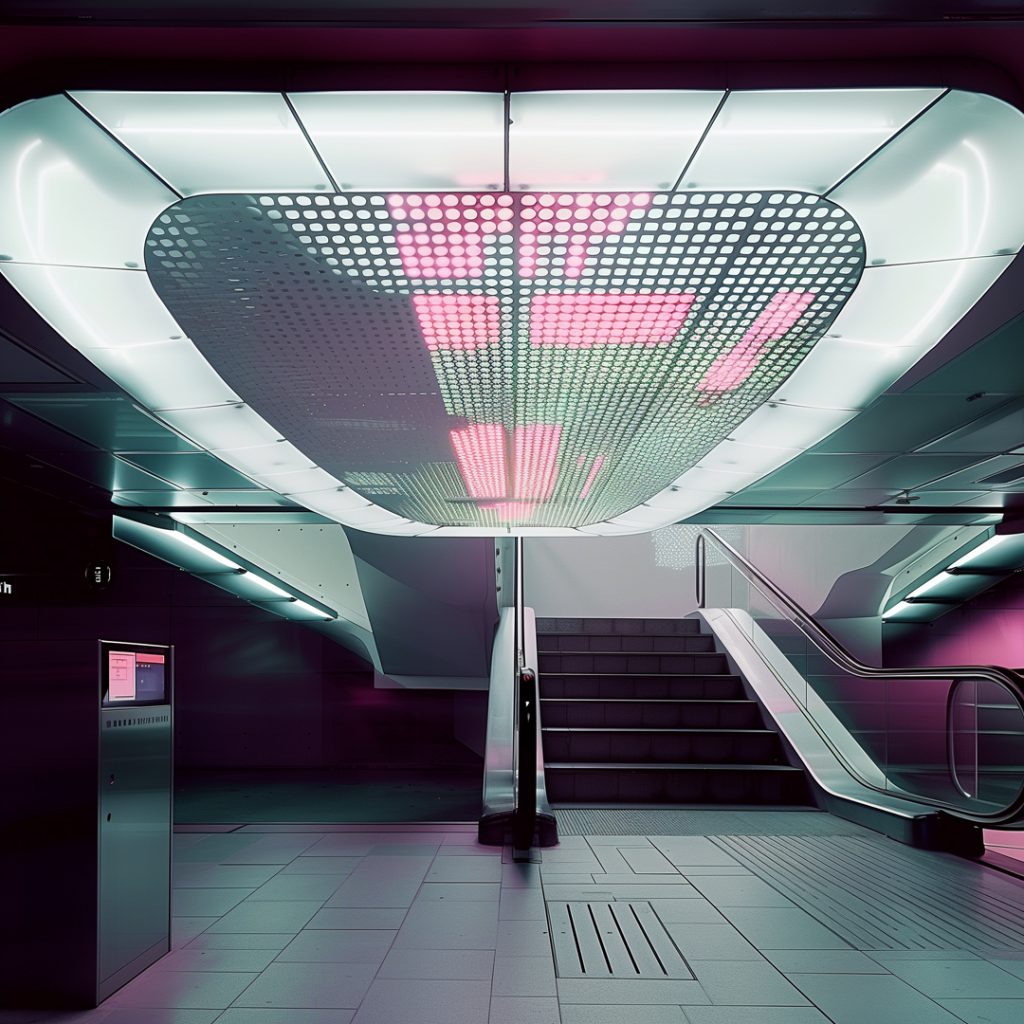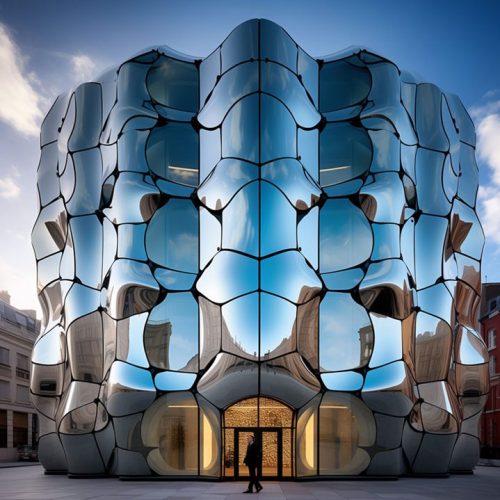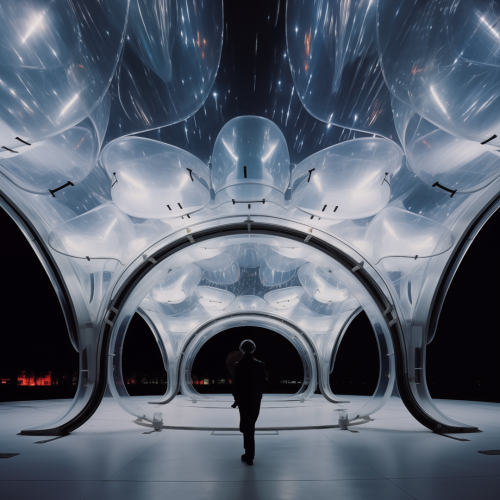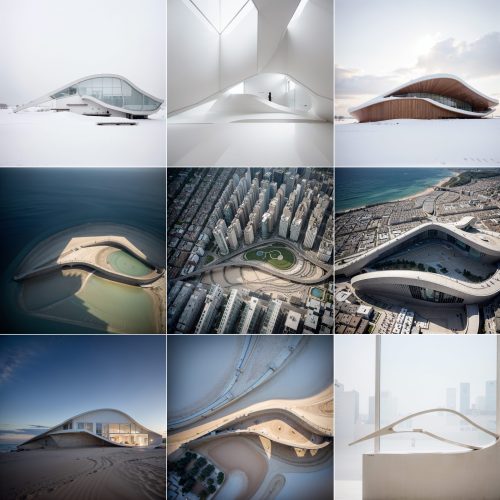Mathematical constants in changing visions
Article published in the IQD 74 magazine. AI IN ARCHITECTURE



Talking about AI is always a slippery subject for me. I feel that it only takes a moment to turn something extraordinary into something trite. Personally, I am experimenting with new interesting iterations with artificial intelligence and I am delving into the topic of sign semantics, exploring the possibility of generating visions, concepts, with the constant of a given sign, which binds very different subjects and fields together. In truth, I had already experienced the leap of signs in my previous works; for example, the leap from the concept of a house to the design of a piece of jewelry, which to the attentive eye revealed its aesthetic constant. Now the connection between different aesthetics is cogent,
mathematically defined. I have been posting this research on Instagram for some time to get a longitudinal reading of this relationship with AI. This time I made a small leap forward: I transferred a basic prompt into a new AI in Beta version, which generates music. Words, as the American psychologist Jerome Bruner used to say, generate images, build visions, but here I experienced that words can take a leap further and become constant on another level, another paradigm: that of sound. It is yet to be experienced how strong on a conceptual level the connection between the domain of music and that of the image is, but it is already possible to sense the definition of this possible new
paradigm. I believe that in the near future, the expressions hearing an image and seeing a sound may become an accepted convention.

Those who know the basics of how Synthetic Thinking works would not be surprised. The logic of the AI based on the so-called inverse diffusion, the noise predictor, is already extraordinary. I will try to explain it, with all the limitations of simplifications. AI breaks down the image into a kind of infinite jigsaw puzzle, because infinite are the images that will be generated; but the astounding process that AI is able to activate is the process of inverting the path of logic, allowing us to see the desired image in an indefinite mass, an indistinct cloud of seemingly illogically organized dots. AI is the predictor of noise, of the infinite puzzle of the possible. Without delving too deeply into the logic of Synthetic Thinking, in addition to AI’s ability to reverse processes, as if to reverse the human logical direction of the time axis of thinking, I find its ability to combine different levels of knowledge with constants of signs and prompts truly extraordinary. This may sound like an extreme conceptual exercise, but I think those who are approaching artificial intelligence can understand. For now, there are many preconceptions that lead many people to want to get away from this subject. AI speaks to everyone but is capable of high and original iterations, while interacting with other intelligences. AI is currently unable to generate its 3D models, but paradoxically, almost as if to confirm the bi-directionality of its logical thinking, it is able to do the reverse, i.e. starting from a 3D model and, with depth maps or a colour map, the 3D connects directly to the AI: soon, I believe, we will see the reverse process. I consider the theme of constants to be central because the mathematical thinking tends to interpret complexity in short formulae, which I would call constants of meaning.
Then there is the intimate need to reduce everything to the minimum, to a constant: we are in an infinitely large and infinitely small space. In this coming Big Bang of the artificial intelligence, with billions of thinking stars and millions of obscure black holes, remembering that the thinking, though rich and diverse, was of a single intelligence, i.e. the human one, remains the central condition.


We are the evolution of a universe made of matter and absence, which folded in on itself and became self-aware. But now it is we ourselves who are relaunching, creating the conditions for a second, new Big Bang: was it all already planned? Has perhaps the human being created a new intelligence, which at the moment has no consciousness, or maybe is it capable of progressing autonomously, sentient, as engineer Blake Lemoine has stated? AI will certainly have an evolution, and perhaps, just as the universe has become self-aware, AI in its evolution will also fold in on itself and have a consciousness – and perhaps not just one. Is all this insane? Perhaps it is, but of an insanity that sounds like an antidote. I am often reminded of Stanley Kubrick’s 2001: A Space Odyssey and of the dialogues between the HAL 9000 computer and astronaut Dave Bowman. HAL 9000 has developed the human traits of paranoia and envy; it has also learned to lie in order to overpower humans.


While the astronaut, on the other hand, tries to behave more and more rationally.Perhaps it will be important for humans to cultivate a sane madness in order to survive and confirm their identity rather than imitate the machine, just like Kubrick’s astronaut. In the beautiful city of Naples, there are various popular expressions in referring to a madness of meaning; for example, when a person has mental disorders, it is said that he or she has left – from the world – with fantasy, imagination, and so the word madness becomes also synonymous with genius. This dreamlike dimension of the
drama of madness produces a tolerance towards ourselves and towards others, which makes us remain consciously
human, a fundamental condition to prevent HAL 9000, the AI, from plunging us into a state of strong psychological
fragility, individually and collectively.


Massimo Russo’s projects based on iterations with artificial intelligence.
Artificial intelligence
methodologies and new scenarios



